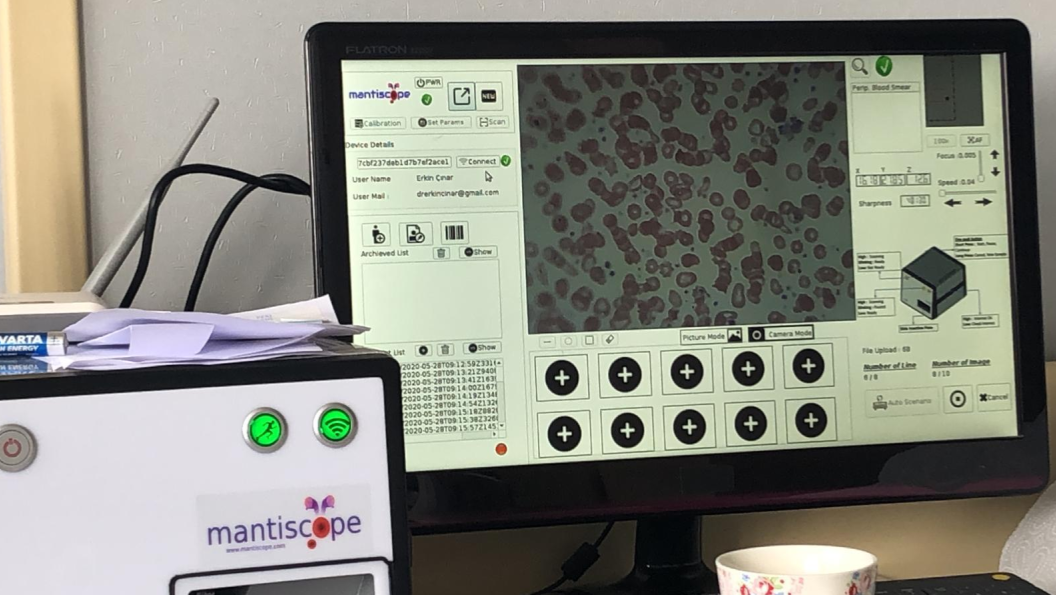Mert Burkay, CEO and Co-founder of Mantiscope, explains it’s blood diseases Industrial Tech solution
Access to healthcare services is a key aspect of a welfare society. However, in rural areas facing significant shortages of healthcare facilities at all levels and of specialist doctors, this right is limited. In Spain, for instance, residents of rural areas have to travel an average of 22 kilometers to reach a health center, 20 kilometers more than in urban areas, according to data from the European Commission’s Rural Observatory. Additionally, rural hospitals lack the resources of large hospitals, especially those that are part of hospital chains, to finance multi-million dollar expansions.
For this reason, today we are speaking with Mert Burkay, CEO of Mantiscope. This is one of the startups participating in our S2 Xpeed 2024 Program. Based in Turkey, it was founded two years ago with the goal of implementing industrial technology in hospitals in rural or developing areas. Let’s see how Mantiscope blood disease detection technology can address this problem.
First of all, who is Mert Burkay Çöteli?
―I’m an electrical engineer based in Turkey, affiliated with a middle and technical university. My focus is on medical technology and since two years ago I am the CEO and Co founder of Mantiscope.
How was the idea for Mantiscope born?
―My wife is a geriatrist with experience in hematology. One day, while working in the lab and examining hematology samples, she thought it would be beneficial to have a way to evaluate these slides more efficiently. She suggested the idea, and I thought it would be great to develop an algorithm to classify them. However, we needed a scanner first. That’s how the idea was born. My wife proposed it, and we developed it together. I reached out to some colleagues, signed collaborations with hematology professors, and it progressed from there.
So, the idea came from your wife?
―Yes, I wasn’t in the field. She had a real problem, and I provided the solution.
Why does it cost so much to detect cancer in blood with the current methods on the market?
―Traditional methods are a challenge, especially in rural areas where there is a lack of expertise and financial resources. In an analog system, a blood sample is collected from a patient, and a professional examines it manually using a microscope. They zoom in on the sample, scan the slide, and try to find any anomalies. This is the traditional method. However, high-capacity hematology labs have technical tools that automate this process. With Mantiscope, our main objective is to fill the gap in rural and suburban areas, since without the required resources there’s no available interpretation or examination of the slide, and patients often have to travel to another city for a proper diagnosis.
One of your main achievements is that you have developed a final product that doesn’t cost a lot of money. How does Mantiscope achieve that?
―We achieve this by providing solutions through a cloud-based system. The intelligence is in the cloud, and the hardware devices are distributed in rural areas or places lacking experts. These hardware devices don’t need to have AI capabilities themselves. They simply scan the samples and connect to the cloud software. With this approach, the costly part—AI-based systems—is centralized in one place and the scanners would be the bridge between the samples and the artificial intelligence system.

So, what would the day-to-day life of a professional examining samples with Mantiscope be like?
―The doctor takes a blood sample and places it in the scanner device. The scanner captures images and connects to the AI system, which examines the sample. The AI then provides a diagnosis that the doctor can directly translate to something like “OK, go to a center,” or “No, you’re fine, nothing to worry about.” This eliminates the need for patients to wait up to 10 days for an accurate diagnosis. And this is crucial for diseases like leukemia. A patient with leukemia can show symptoms after a few days to a month, and without timely diagnosis and treatment, they could lose their life.
Can you give an example of a hospital that has implemented Mantiscope blood disease detection technology and benefited from it?
―In a city near Ankara in Turkey, with a population of 50,000, a patient once went to the hospital, but left without a satisfactory diagnosis.The physician initially prescribed some medicine for what he thought was a simple disease and advised the patient to rest. However, he added that if the condition didn’t improve in a few days, it could be cancer, and the patient would need to go to a center.
What is a “center”?
―A “center” is essentially a hospital located in a larger city, with a population of over 1 million, because smaller cities lack the necessary experts. Patients with more serious conditions are referred to these centers. With Mantiscope, this problem can be resolved. This patient no longer needs to be scared anymore, since she can get a diagnosis on the same day with our hardware scanners.

There are other technologies that use AI to detect blood diseases. Why should a hospital choose Mantiscope?
―Our main differentiation is that we focus on areas lacking experts. Other hematology labs aim to fill gaps in places that already have experts and offer high-cost automation for well-equipped hospitals. Our second key difference is our system’s remote collaboration capability. Being cloud-based, it can be used globally. Other competitors deploy their technology in high-capacity hospitals and work locally. They don’t allow access to their technology from outside the hospital because they want patients to visit their facilities.
Have you signed any partnerships or collaborations?
―Yes, we are in the development phase and have started collaborations with some universities and hospitals. For example, in Ankara, we are working with two university hospitals that have many hematology experts, which allows us to gather data. Data is our main goal right now because we need it to perfect our AI. We are also working in another Turkish city, Adana. With this wide variety of blood sample diseases we are collecting, we can recognize almost any disease. Currently, we are validating the technology in two hospitals with real patients, and it’s working perfectly.
What are your next steps?
―We plan to expand our operations in Europe. Next month, we start a collaboration with Hospital Clinic in Barcelona, and we are excited to implement our scanner AI devices there.
Are you enjoying the journey overall?
―It’s challenging. Since it’s a medical device, we can’t go directly to market—we need to meet regulatory requirements, which adds a lot of effort. But we believe this is a good project that will save many lives. Mantiscope was born from an honest need and aims to solve it. Rural and underdeveloped areas deserve access to technology that can save lives.








